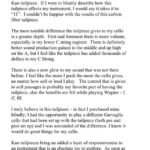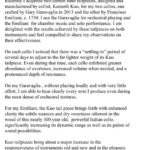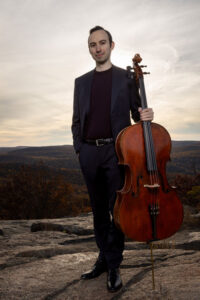

Testimonials
Felix Umansky, cellist
Apple Hill Center for Chamber Music
It drastically opened up the sound of my cello without sacrificing any depth or richness, which is exactly what I was looking for! Every register of the instrument has much more resonance and projection now. What I didn’t expect was that it also really improved responsiveness across the board. I’d always felt like I’d been fighting my instrument to get it to speak how I wanted and just switching the tailpiece went a huge way towards solving that.
John Belk, Orchestra Musician
I have played with the tailpiece over Christmas and I am very happy with it. It really works as aimed for. As I am waiting for new strings I also tried it on one of my treasures that is a nearly 18″ viola made in Romania. This also makes a big difference to how this instrument sounds. Sometimes I feel like standing inside a big cave playing and listening to myself as the volume has increased, the response is better, the overtones are stronger and clearer; more tonal, and it is overall more open.
This also helps me also with playing Bach as the overtones play a big role.
Then the tailpiece in addition to the new nut I made from a mammoth tooth probably brings the best out of the instrument. But the best part! My wife has given compliments as she hears the difference. She says it is like a different instrument, a level up.
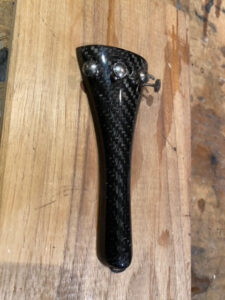
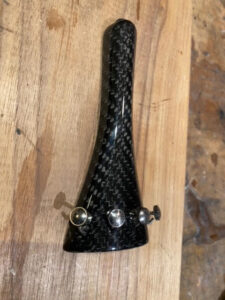
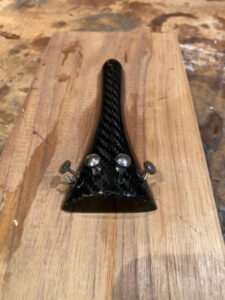
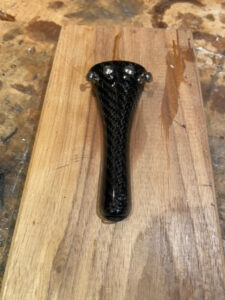
Gisli Thorsteinsson, Ph.D., Professor
Department of Design and Craft
University of Iceland – School of Education
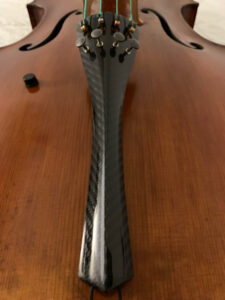 I’ve had my Koberling cello for the past 10 years, thinking I’ve tried all the best strings and adjustments I could try to maximize the projection and power of my instrument. My cello is quite piercing and bright, and no matter what different strings and adjustments and even different bows I’d try it would still sound a bit too bright and almost piercing at times. A friend of mine recommended Kenneth Kuo’s carbon fiber tailpiece to me after he had that tailpiece on his cello for awhile. Since I was local I was thinking “Sure why not?”. I first tried out the Gen 1 tailpiece and even after a few minutes of playing my cello, I immediately noticed a faster response to my cello and an overall more open sound. A few weeks later, Kenneth made me a Gen 2 for me to try out saying that it would’ve fit my cello more and he was definitely right! My cello now in addition to sounding more open and responsive, has a warmer quality, more punchy bass and is actually singing! Thanks Kenneth!
I’ve had my Koberling cello for the past 10 years, thinking I’ve tried all the best strings and adjustments I could try to maximize the projection and power of my instrument. My cello is quite piercing and bright, and no matter what different strings and adjustments and even different bows I’d try it would still sound a bit too bright and almost piercing at times. A friend of mine recommended Kenneth Kuo’s carbon fiber tailpiece to me after he had that tailpiece on his cello for awhile. Since I was local I was thinking “Sure why not?”. I first tried out the Gen 1 tailpiece and even after a few minutes of playing my cello, I immediately noticed a faster response to my cello and an overall more open sound. A few weeks later, Kenneth made me a Gen 2 for me to try out saying that it would’ve fit my cello more and he was definitely right! My cello now in addition to sounding more open and responsive, has a warmer quality, more punchy bass and is actually singing! Thanks Kenneth!
Paul Lee, cellist
Jeannot Welter
cellist, conductor, and digital audio specialist
 The Tonal Tailpiece has done wonders for my cello. It took what was already a beautiful instrument and naturally amplified and clarified its voice. With the tailpiece, there is an undeniable increase in resonance, coloristic possibility, and ease of playing. I am incredibly grateful for the Tonal Tailpiece every time I touch bow to string.
The Tonal Tailpiece has done wonders for my cello. It took what was already a beautiful instrument and naturally amplified and clarified its voice. With the tailpiece, there is an undeniable increase in resonance, coloristic possibility, and ease of playing. I am incredibly grateful for the Tonal Tailpiece every time I touch bow to string.Ben Fried, cellist
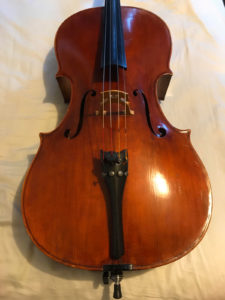 I have been extremely pleased with the changes in my sound after installing the tonal tailpiece. It has given my Gaetano Sgarabotto cello a warmer and more open tone. After I had the tailpiece installed, I was surprised at how much the strings vibrated. The sound, after a few days, really rounded out and has given me a larger color palette to work with. The projection really improved and I’m very happy with the appearance of the tonal tailpiece with my cello. I will continue to recommend your tailpiece to other musicians. Well done Kenneth!
I have been extremely pleased with the changes in my sound after installing the tonal tailpiece. It has given my Gaetano Sgarabotto cello a warmer and more open tone. After I had the tailpiece installed, I was surprised at how much the strings vibrated. The sound, after a few days, really rounded out and has given me a larger color palette to work with. The projection really improved and I’m very happy with the appearance of the tonal tailpiece with my cello. I will continue to recommend your tailpiece to other musicians. Well done Kenneth!Joe Goering, cellist
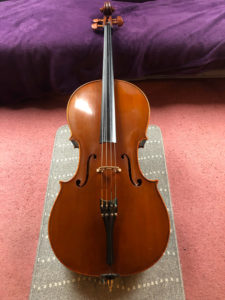 It’s hard to know what to say that hasn’t already been said but, without hyperbole, Kenneth’s Tonal Tailpiece is the most extraordinary advancement in string instrument tone production I have ever experienced. It is understandable that, even with all of the praise from such a wide variety of professionals and amateurs alike, it must seem to be too good to be true. However, this marvellous piece of kit earns every single accolade – and then some!
It’s hard to know what to say that hasn’t already been said but, without hyperbole, Kenneth’s Tonal Tailpiece is the most extraordinary advancement in string instrument tone production I have ever experienced. It is understandable that, even with all of the praise from such a wide variety of professionals and amateurs alike, it must seem to be too good to be true. However, this marvellous piece of kit earns every single accolade – and then some!
I “retired” from my performing career quite young, so I still have a relatively modest cello. After more than 25 years with it, I thought I had figured out how to maximize the entirety of its potential. I was wrong.
The increased resonance from the tailpiece is unbelievable – not only does it produce more sound, but the quality of the sound produced is simply better. The low register is deeper and richer, whereas the upper register projection soars without becoming harsh or nasal. This newfound responsiveness has even had me rethinking various elements of my technique and playing, as I no longer need to work so hard to ‘coax’ the sound I am trying to produce out of my cello.
Bravo, Kenneth !!
Matthew Peters, cellist
Managing Director, ABMC
Former General Manager, English Symphony Orchestra
Former Producer, Chicago Symphony Orchestra
The tailpiece is one of the most important elements of an instrument’s tone production and playability. I am honored and delighted to say that TonalTailpiece is the finest and most versatile tailpiece on which I’ve ever played. It transformed the projection, brilliance, and flexibility of my sound, giving me more dynamic range and color to work with in my playing. I highly recommend it to anyone searching for that final ingredient in their setup!
Zlatomir Fung
2019 Tchaikovsky cello competition gold medalist
My Luther friend couldn’t believe it! And I can’t either!
Even though the effect on the real Guadagnini is not as efficient as on the modern violin, the modern violin was already a monster but now it is probably on the same level from sound projection as the real Guadagnini!
At least 30-50 % more sound and open brilliance is an amazing result!!!! Thank you so much! I will definitely recommend your product! And my Luther friend is thinking to order from you as well!
Thank you for such a brilliantly made invention! I am sure not just the material is what makes the nice sound but your knowledge and love to the matter!
Luka Ljubas
Violin, Vienna
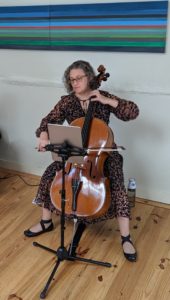 I wanted all of you to know that this is truly a fantastic product. Prior to getting the tailpiece installed, I had been trying different strings (frustrating!), different rosin (rosin will not change your life, no matter how fancy), and was bow shopping (expensive!) due to lagging response time and muddy tone – especially in the lower strings. After watching Ken’s interview video with Brinton Smith (Principal, Houston Symphony) I decided to try it out – after all a new tailpiece is a LOT cheaper than a new high-end bow. I am so very happy with my new Tonal Tailpiece! Once I got through the break-in period (warning, you definitely need to let it “settle” in for 3-5 days), the cello sounds marvelous. My quartet partners have all commented on how the tone of the cello is more focussed. I have also noticed that the strings speak immediately, rather than the slow response I had been experiencing prior. I am finding that I can play faster and more nimbly. Having just finished a series of 4 concerts (playing Bach Suites and duos with classical guitar) and I confirm that I will never go back to my old wood tailpiece! Yes I know Ken from Juilliard, and yes I paid full price, and yes it is worth every penny. Not a paid endorsement!
I wanted all of you to know that this is truly a fantastic product. Prior to getting the tailpiece installed, I had been trying different strings (frustrating!), different rosin (rosin will not change your life, no matter how fancy), and was bow shopping (expensive!) due to lagging response time and muddy tone – especially in the lower strings. After watching Ken’s interview video with Brinton Smith (Principal, Houston Symphony) I decided to try it out – after all a new tailpiece is a LOT cheaper than a new high-end bow. I am so very happy with my new Tonal Tailpiece! Once I got through the break-in period (warning, you definitely need to let it “settle” in for 3-5 days), the cello sounds marvelous. My quartet partners have all commented on how the tone of the cello is more focussed. I have also noticed that the strings speak immediately, rather than the slow response I had been experiencing prior. I am finding that I can play faster and more nimbly. Having just finished a series of 4 concerts (playing Bach Suites and duos with classical guitar) and I confirm that I will never go back to my old wood tailpiece! Yes I know Ken from Juilliard, and yes I paid full price, and yes it is worth every penny. Not a paid endorsement!
Jeanne Fox
Principal cello, Hudson Opera Theater
Former Principal Cello, Northern Dutchess Symphony Orchestra
Rudolf Gerber
Amateur viola player, Switzerland
My cello was made in 2018 by Seattle luthier Jason Starkie; it is o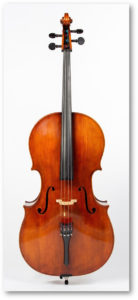
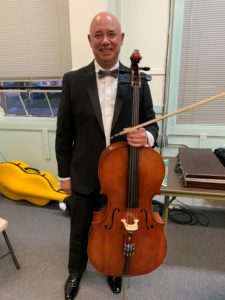 n a Grancino pattern and at my request, has a poplar back. As originally set up by Jason, my cello has a gorgeous sound with a rich, resonant bass and a sweet top end. I decided to try the Tonal Tailpiece upon recommendation from Brinton Smith and because I wanted to accelerate the maturation process of my cello as quickly as possible. After setting up my Starkie with your tailpiece I love it even more.
n a Grancino pattern and at my request, has a poplar back. As originally set up by Jason, my cello has a gorgeous sound with a rich, resonant bass and a sweet top end. I decided to try the Tonal Tailpiece upon recommendation from Brinton Smith and because I wanted to accelerate the maturation process of my cello as quickly as possible. After setting up my Starkie with your tailpiece I love it even more.
I get asked often by other cellists what the tailpiece does for my cello. Again, my cello was excellent “out of the workshop.” However, with the Tonal Tailpiece I can report that the response is very quick. In addition, I think the range I’m able to produce is quite large. To be honest, I am not ashamed to admit that my Starkie with your tailpiece probably has more range than I am capable of producing. The cello inspires me to practice, to learn, improve and to bring as much to it as I can.
As far as how my cello sounds in the hall and not under my own ear, I have heard my cello in recordings (there is one particular one available on YouTube which is pretty good), and I’ve also heard feedback from audiences and Jason himself that my cello produces that rich, clear, creamy, big sound that I had hoped for. I am able to produce good punch when I want it, too!
As others have said, there are many things which affect the sound produced by a cello, and every cello is different. I have a number of bows, for example, each of which produces a slightly different sound, each of which has a different feel in my hand. I have tried a wide variety of strings on my cellos; strings also have some effect on sound and playability. Everyone who is serious about playing cello, or avid, should give the Tonal Tailpiece a trial. In doing so, the cellist may find this piece of the set up of the cello produces startling results. On my cello, once the tailpiece had settled in (tailgut stretched out, etc.) the effect was significant.
Thanks Ken!
Tan David
cellist
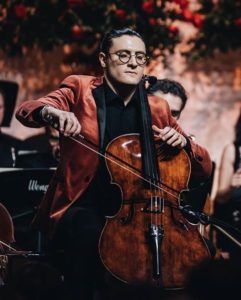
The tailpiece has been working absolutely wonderfully for my cello; the sound is beautifully rounded but still has plenty of power to it and the harmonics really resonate so much more! Plus, it also looks really cool and I have gotten so many compliments on it! I am very happy to be using it on my cello. It really is a fantastic tailpiece.
Santiago Canon Valencia
Cello
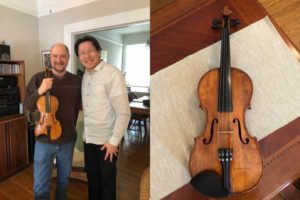 The tailpiece has now been through many climates, halls and even a string change. Passed all the tests ! I love it. In all the different acoustics it kept the characteristics I noticed right from the beginning – more breath to the sound. On my violin this translates into more ring, depth and ease of playing. As others noted, your tailpiece can add more positive colors to the sound than a sound post tweaking. It must be the combination of material, weight and shape, whatever, I hear and feel a major difference. ( more than just merely subtle) Thank you for the personalized tuners. Tuners can be quite different. Some fussy, as well as difficult to turn and difficult to put new strings on. As we talked about, the lever often falls off when changing a string. Not a fun thing to have happen in the middle of a concert – imagine if the lever falls to the ground and you can’t find it. You’re tuners are simply the best in all regards. Thanks for all the thought and work you put into these important devices. Over the last 40 years I have tried many different kinds of tailpieces and totally recommend yours. It’s fabulous. My violin thanks you.
The tailpiece has now been through many climates, halls and even a string change. Passed all the tests ! I love it. In all the different acoustics it kept the characteristics I noticed right from the beginning – more breath to the sound. On my violin this translates into more ring, depth and ease of playing. As others noted, your tailpiece can add more positive colors to the sound than a sound post tweaking. It must be the combination of material, weight and shape, whatever, I hear and feel a major difference. ( more than just merely subtle) Thank you for the personalized tuners. Tuners can be quite different. Some fussy, as well as difficult to turn and difficult to put new strings on. As we talked about, the lever often falls off when changing a string. Not a fun thing to have happen in the middle of a concert – imagine if the lever falls to the ground and you can’t find it. You’re tuners are simply the best in all regards. Thanks for all the thought and work you put into these important devices. Over the last 40 years I have tried many different kinds of tailpieces and totally recommend yours. It’s fabulous. My violin thanks you.
John Sherba
Violin, Kronos Quartet
After picking up my tonal tailpiece I was skeptical that it would work. But after installing it on my Jakstadt Double Bass I was amazed at the ease and flexibility with which my instrument responded just after a few days of playing. While performing in Scandinavia and abroad, my bass has had some unfortunate accidents with certain airlines. I have since had many repairs done and found myself “breaking in” the instrument after every repair. I have found that the Tonal Tailpiece has contributed to getting my instrument back into proper shape and sounding better than before. It has opened up the sound and also a world of color that was not possible on this bass earlier. The response of the lower strings has become more crispy and quick. It has made my instrument even better.
Tristan Sutton
Double Bass, Bergen Philharmonic Orchestra
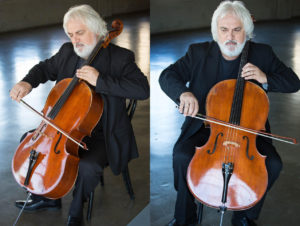
on 1988 David Rubio
After trying out Kenneth Kuo’s new carbon fiber tailpiece on my 1988 David Rubio for the past 2 months I can safely say it has increased the responsiveness of the instrument by at least 50%. I have now played it in recording sessions, chamber music and solo performances, and it feels like falling in love with the instrument all over again. I wanted to make sure that it was not just the sudden release of tension when swapping tailpieces that was giving the cello a new found but possibly short lived resonance, so I stuck with it and have found that, if anything, it has got even better over the past 8 weeks as the instrument has settled down again. I have had more positive comments than ever, particularly from studio engineers that know my sound well, ranging from high lyrical solos to heavily articulated, fast, rhythmic ‘heavy metal’ riffs on the lower strings. Always, the sound is full and resonant, and the quick response, even on the lower strings, is a joy. Bravo Kenneth!
Andrew Shulman
Principal Cello, Los Angeles Chamber Orchestra
Professor of Cello, University of Southern California
Former Principal Cello, Los Angeles Philharmonic Orchestra
Former Principal Cello, Philharmonia Orchestra
Former Principal Cello, Academy of St Martin in the Fields
Former Professor of Cello, Royal College of Music, London
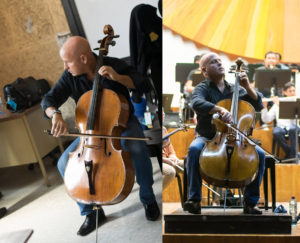
Robert DeMaine with his 1684 Antonial Stradivarius
Ken is not only a genius-level inventor and thinker, but is truly a great cellist. We both studied at Yale around the same time with Aldo Parisot. He is definitely going to be leaving a very big mark on the 21st-century with this seemingly “unimportant” accoutrement for string instruments – the tailpiece – but it has proved time and time again that it it not only minimally improves every instrument’s sound and playability (in my experience), but always makes a dramatic positive difference. And they are versatile; I opt for one that has no “weave” pattern and no fine tuners – much like a baroque set-up. They are, of course, available with or without the fine tuners which are titanium.
As a professional cello accessory ‘hoarder,’ owning every conceivable invention or accoutrement for the cello, like resonators, endpins and strings made out of every conceivable material, I must say that Kenneth Kuo’s (Ken is a formidable cellist AND inventor) carbon fiber tailpiece is the biggest game-changer of them all – possibly the most important innovation for the cello of our century, comparable to great steel strings in the last century and the endpin in the previous one. It deserves documented historical perspective as much as Cramer and Tourte’s development of the bow in the 18th century. The tonal enhancement it offers cannot possibly have a price affixed to it. This product is, in every way, truly amazing. BRAVISSIMO, Kenneth Kuo, for making my life easier and enabling me and many others to express themselves more freely on their instruments.
Robert DeMaine
Principal Cello, Los Angeles Philharmonic
International soloist, chamber musician, teacher, and presenter
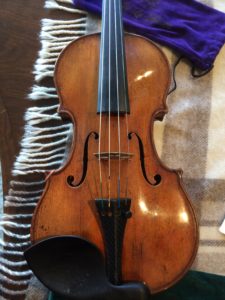
on 1686 Antonial Stradivarius violin
When Julie Reed-Yeboah put it on my violin, I was immediately aware of extra projection and clarity. Roberta, who knows my playing very well, instantly heard the difference in my Strad, and was very enthusiastic, just as she felt with the carbon fiber tailpiece for her cello.
I have to admit that a few days later, I was struggling a bit with the extra edge in the sound, and for part of one day even considered switching back to the old tailpiece. Instead I had a sound-post adjustment, to fit the sound character and potential of the new set-up, and that was sufficient to convince me: I’ve never had doubts since then. It will be interesting to see what happens once the weather changes to a colder and drier climate.
My violin has always been changeable and I’m probably hyper-sensitive to any fluctuations in the roundness of the sound I produce. Occasionally, even recently, I’ve had days where I couldn’t obtain exactly the sound I wanted. But the increase in power and, especially in the middle strings, of clarity, is enough to persuade me that I’d never want to give up this new dimension I’ve discovered.
Eugene Drucker
Emerson String Quartet
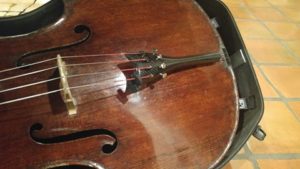
1715 Gaetano Pasta
I have tried many devices over the years promising miraculous improvements- tailpieces, bridges, endpins, strings- and have found they mostly made small differences at best. I tried Ken’s tailpiece out of curiosity, expecting a similar minor change at best, but I was floored by the results. It doesn’t alter the voice of the instrument, but the cello sounds like a more open, fuller, quicker-responding version of itself. People who have heard my cello for years were shocked at how much better they could suddenly hear the instrument. Audience in our hall commented on being able to suddenly hear my cello even in full orchestral tuttis. (An interesting side effect is that the difference between bows is highlighted, in a good way) It is a bigger difference than any strings, or any adjustment, bridge, strings, or soundpost I’ve ever tried on my instrument. It might seem expensive, but after playing it, I would pay far more just to keep it, and I just purchased a second one for my other cello. This is the real thing. Every student and colleague I know that has tried it has had a similar reaction to mine, and I’m sure that everyone is going to be using these eventually. Ken has done exactly what the old masters did- experimenting with the best available materials to find new ways to make instruments sound ever better. As a cellist, you spend your life asking ‘can you hear me?’ and I feel like a professional basketball player that woke one morning to find he was six inches taller!
Brinton Smith
Principal Cello, Houston Symphony, faculty Rice University, Aspen Music Festival
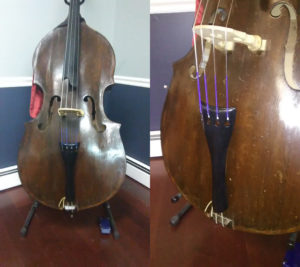 Mr. Kuo is a true renaissance musician. He is a fabulous cellist, very knowledgeable repair person, and all around excellent musician. Ken and I have collaborated together on many chamber music performances, and his musical abilities are of the highest caliber. Ken’s fantastic abilities as a cellist give him an excellent insight into what makes a string instrument really sing. As a professional double bassist, I am acutely aware of the challenges we bassists face in our low tessitura to create a warm, articulate sound that can be heard properly by our fellow musicians in the upper strings. The Kenneth Kuo Tailpiece works fabulously on my instrument in that it amplifies and improves the inherent qualities of my instrument. This includes a very noticeable improvement in response, articulation, warmth, and resonance! I am simply in awe of the improvement in sound this tailpiece alone has done for my double bass. Bravi Tutti Ken!
Mr. Kuo is a true renaissance musician. He is a fabulous cellist, very knowledgeable repair person, and all around excellent musician. Ken and I have collaborated together on many chamber music performances, and his musical abilities are of the highest caliber. Ken’s fantastic abilities as a cellist give him an excellent insight into what makes a string instrument really sing. As a professional double bassist, I am acutely aware of the challenges we bassists face in our low tessitura to create a warm, articulate sound that can be heard properly by our fellow musicians in the upper strings. The Kenneth Kuo Tailpiece works fabulously on my instrument in that it amplifies and improves the inherent qualities of my instrument. This includes a very noticeable improvement in response, articulation, warmth, and resonance! I am simply in awe of the improvement in sound this tailpiece alone has done for my double bass. Bravi Tutti Ken!
Mark McCormick
Principal Bass
United Sates Coast Guard Band
Asst. Professor of Double Bass
Connecticut College
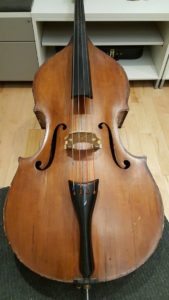 Kenneth Kuo’s Charbon Fiber Tailpiece is the ultimate game changer for any instrument. I was ready to sell the bass I treasure because it just didn’t have a sound. As soon as Kenneth’s tailpiece arrived I threw it on my bass and the result was immediate. I could not believe the difference. The sound I had always hoped for in that instrument went from dull, uninteresting, and lackluster, to brilliant, resonant, and projecting. Thank you Kenneth for giving my bass the voice I always knew it had.
Kenneth Kuo’s Charbon Fiber Tailpiece is the ultimate game changer for any instrument. I was ready to sell the bass I treasure because it just didn’t have a sound. As soon as Kenneth’s tailpiece arrived I threw it on my bass and the result was immediate. I could not believe the difference. The sound I had always hoped for in that instrument went from dull, uninteresting, and lackluster, to brilliant, resonant, and projecting. Thank you Kenneth for giving my bass the voice I always knew it had.
Kurt Muroki
Professor of Music – Jacobs School of Music at Indiana University
New School Concerts Music Advisory Committee member
Faculty / Director of the Kaplan Fellowship Program – Bowdoin International Music Festival
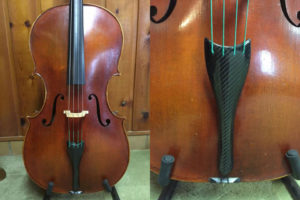 I have a 2002 Gary Garvaglia cello that has recently been set up with a Kenneth Kuo tailpiece. If I were to bluntly describe how this tailpiece affects me instrument, I would say it takes it to “11”. I couldn’t be happier with the results of this carbon fiber tailpiece.
I have a 2002 Gary Garvaglia cello that has recently been set up with a Kenneth Kuo tailpiece. If I were to bluntly describe how this tailpiece affects me instrument, I would say it takes it to “11”. I couldn’t be happier with the results of this carbon fiber tailpiece.
The most notable difference the tailpiece gives to my cello is a greater depth. First and foremost there is more volume, especially in my lower C string register. There is definitely better sound production gained in the middle and up high on the A, but I feel like the tailpiece has added thousands of dollars to my C String.
There is also a new glow to my sound that was not there before. I feel like the more I push the more the cello gives, no matter how \v soft or loud I play. The control that is given to soft passages is probably my favorite part of having the tailpiece, also the benefits are felt while playing Wagner – f, ff, fff.
I truly believe in this tailpiece – in fact I purchased mine blindly; I had the opportunity to play a different Garvaglia cello that had been set up with the tailpiece (both pre and post set up) and I was astounded of the difference. I knew it would do great things for my cello.
Kuo tailpieces bring an added a layer of responsiveness to an instrument that is an absolute joy to explore. As soon as I got my cello back from the luthier I knew I had made the right decision.
Thank you Kenneth Kuo!
Jesse Henkensiefken
Director of Orchestras & String Studies, Kansas Wesleyan University
Principal Cellist, Salina Symphony
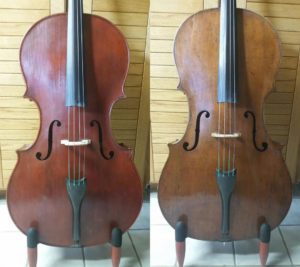
2013 Garavaglia and a 1730 Emiliani cello
Recently I acquired two carbon fiber tailpieces, designed and manufactured by cellist, Kenneth Kuo, for my two cellos, one crafted by Gary Garavaglia in 2013 and the other by Francisco Emiliani, c. 1730. I use the Garavaglia for orchestral playing and the Emiliani for chamber music and solo performance. I am delighted with the results achieved by these tailpieces on both instruments and feel compelled to share my observations on their effectiveness.
On each cello I noticed that there was a “settling-in” period of several days to adjust to the far lighter weight of its Kuo tailpiece. Even during that time, each cello exhibited greater abundance of overtones, increased volume when needed, and a pronounced depth of resonance.
On my Garavaglia, without playing loudly and with very little effort, I am able to hear clearly every note I produce even during the most dense of orchestral textures.
For my Emiliani, the Kuo tail piece brings forth with enhanced clarity the subtle nuances and dry sweetness inherent in the wood of this nearly 300 year old, powerful Italian cello, significantly increasing its dynamic range as well as its palate of sound possibilities.
Kuo tailpieces bring about a major increase in the responsiveness of instruments old and new and in the pleasure derived from playing them.
Edward Laut
Professor Emeritus of Violoncello, The University of Kansas
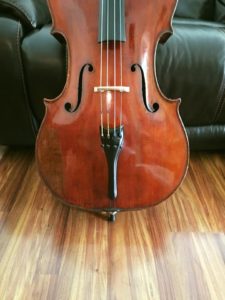 So, after having read stellar reviews of Kenneth’s carbon fiber tailpieces by some truly titanic ‘cellists, and after having been contacted by my old friend from my grad school days, Ken, himself, I decided to give his tailpiece a try. As per the photo, opted for what he called the “stealth” model, in all black—tuners and all—so as to match my cello’s other accoutriments. (A little over 2 years ago, I purchased this truly magnificent-sounding ‘cello, a W E Hill, formerly owned by Janos Starker, of which I am still in awe, so I am truly finicky about all the adjustments and materials I buy for it, be it strings, rosin, or whatever…)
So, after having read stellar reviews of Kenneth’s carbon fiber tailpieces by some truly titanic ‘cellists, and after having been contacted by my old friend from my grad school days, Ken, himself, I decided to give his tailpiece a try. As per the photo, opted for what he called the “stealth” model, in all black—tuners and all—so as to match my cello’s other accoutriments. (A little over 2 years ago, I purchased this truly magnificent-sounding ‘cello, a W E Hill, formerly owned by Janos Starker, of which I am still in awe, so I am truly finicky about all the adjustments and materials I buy for it, be it strings, rosin, or whatever…)
I had the ‘piece put on last month by the great luthier, Paul Becker, of Chicago, from whom I bought the ‘cello, and also had Paul take almost 2 hours to do a sensitive sound post adjustment, so that the jaw-dropping bass on my instrument would be even more impressive. I have to also include that I was trying to decide on “the” bow to match the Hill; I wanted to go with a light Frenchie-poo, but, unlike the rare Clement Eulry bow I’d had for a year, which was heavy, I really had to work with the (Lamy) to coax the depth out of the lower end.
After my ‘cello adjusted to the new ‘piece, and as Paul’s adjustment settled, I came to find the bass was coming forth now like melted butter (WITH the Lamy)and the whole instrument sang out more, with much more projection and an even enhanced quality of sound, actually. Again, the ‘cello’s sonic profile was quite impressive when I first met it, in Chicago, and so it would sound well no matter what accoutriments were on it. I will also confess that I am sure a good deal of the sonic improvement of the Hill is due to the truly 1st rate adjustment Paul gave it…
…but I am equally sure that more than just a little of what makes my ‘cello now so sonorously splendid is the new tailpiece, created by my friend Kenneth Kuo.
Hence, I must add my name to the list of those who are duly impressed with this new game-changer of a tailpiece, which is just entering the string world.
May more of us come to learn of and appreciate this great work.
Bravo, Ken!
Derek Menchan
Cellist & Professor of Humanities, Polk State College
Founder, Director at Voices of the People: A Chamber Music Series
First, I want to say that Kenneth Kuo is not just the maker of this extraordinary tailpiece but he is also a wonderful cellist, Luthier, and all around great guy. He is very enthusiastic, helpful, and easy to work with. Before I continue I want to state that I am just an adult amateur cellist. I have never played professionally. I am very fortunate to have a great teacher who now also has Kenneth Kuo tailpieces on both of his cellos, an old 1730 Italian cello and a modern one. At first I received a tailpiece with fine tuners to trial. That went well and greatly improved the sound of my modern Garavaglia cello. After consulting with Ken I decided that a tailpiece without fine tuners might be the best way for me to go and that’s what I ended up with along with the installation of Pegheds in order to have fine tuning capabilities. My opinion of this tailpiece is that it is a true game changer. It took my cello to a whole new level of power, resonance, responsiveness, focus, projection, and it suggests a whole new and expanded level of musical possibilities and ideas. I’m thrilled with it! Don’t trial one unless you are ready to buy it. You will never go back after experiencing the sound difference. I feel as though I have upgraded my cello to a much higher quality and more expensive one. With that having been said it makes the cost of the tailpiece a bargain compared to having to buy a better cello to hope to get the same results. And if you already own a fine old cello you will still realize the full benefits from this tailpiece. The better the cello and the player the more improved sound you can expect from this carbon fiber tailpiece. I hope other cellists find this amateur assessment helpful.
Duane Nevins
Amatuer cellist
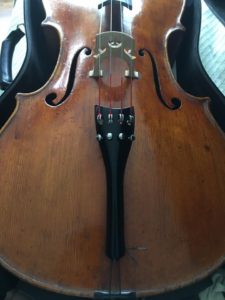 Just installed the tailpiece – great result! Can’t believe, such a difference! Sound is clear and much easier production! Fantastic work, thank you!
Just installed the tailpiece – great result! Can’t believe, such a difference! Sound is clear and much easier production! Fantastic work, thank you!
Suren Bagratuni
Professor of Cello and Chair of the String Area, Michigan State University
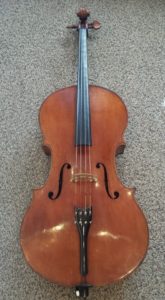 It is second week of trying Kenneth’s carbon fiber tailpiece and I am so thrilled with the result.
It is second week of trying Kenneth’s carbon fiber tailpiece and I am so thrilled with the result.
The resonance, volume and the clarity of the cello increased dramatically and every note rings with such clarity! Definitely helped me to be more aware of my playing and also it became easier to play because I can hear all the notes when I play.
This was the best investment I’ve made on my cello!
Thank you very much, Kenneth Kuo for making me the carbon fiber tailpiece!
Ji-hee Kim
Cello teacher
Serious Statement to the World:
I am an average cellist playing on a rather crappy factory instrument with no special features BUT a Kenneth Kuo Carbon Fiber Tailpiece (which I am the happy owner since only 6 days – so the instrument didn’t yet have the time to settle, for which it will take an estimated 8 more days).
Las night I performed (a cello and piano program of 70 minutes length) in a very nice but extremely dry concert-hall.
Much to my surprise, not only that I didn’t feel unconfortable – but it was for the first time in my career (more than 20 years long now) that I could deal with the poor acoustic with a big smile.
The new revolutionary tailpiece made my instrument sound considerably more potent (not only in terms of volume, but also more amplitude, more generous and more focused sound), more expressive, more responsive – meaning easier to control even in low dynamics situations, such as: one of the pieces last night (the SOFTEST of the whole program) I was playing from BEHIND the audience – and still, the pianist on stage could hear me well (although 50 meters away) and we were perfectly in sync!!! (CAN YOU IMAGINE THAT?!?)
I don’t even want to know what the carbon-fiber tailpiece is doing to good instruments – because that would drive me back to frustrated 🙂
Thank you Kenneth Kuo, my playing is already getting better – because I finally have the right real time feed-back for what I am doing.
Andrei Kivu
Cellist
 Thank Lord that I have not one, but TWO carbon fiber violin tailpieces by Kenneth Kuo
Thank Lord that I have not one, but TWO carbon fiber violin tailpieces by Kenneth Kuo
I was speechless, searching for words to describe the sound and feel after we put my first one on my 1615 Giovanni Paolo Maggini violin. Now, in simple terms–
A. bigger volume,
B. faster response,
C. more transparent sound,
D. much more sensibility,
E. brighter
F. much better penetration..
add all those up, my maggini got about 150 years younger.
Last October at a friend’s church, I could barely hear my violin during hymns when the entire congregation nearly 400 were all singing. However, with Ken’s carbon fiber tailpiece, I think I was leading the entire congregation at Easter service this year..
after the second one, I have been trying it on many violins, all of them had much quicker response, a brighter and transparent yet sweater sound, and better penetration. Older and better instruments have bigger results.
Thank you, my dear friend Ken, for making me the first person to have your carbon fiber violin tailpieces.
David Chi Hong Shih
Violinist
I’m somewhat famous for trying just about every modification and upgrade that is possible on my cello, just because it’s there to try. I can honestly say that my cello came alive with the Kuo tailpiece. You get the feeling that the strings reach a level of vibrancy that is off the charts, and every fiber of the cello is activated. Although, I can tell these differences of feel while playing, you have the awareness that there’s no end to where the sound can go. One can sense the love that goes into the making each one. It is an honor to own one of these tailpieces. Thank you!
Debbie Brooks
Owner of Music Contracting and Production Company
Free-lance Cellist
 Kenneth Kuo, thank you so much for this amazing product. All string players, especially cellist should give it a try.
Kenneth Kuo, thank you so much for this amazing product. All string players, especially cellist should give it a try.
Peng Li
Assistant Principal Cellist, North Carolina Symphony
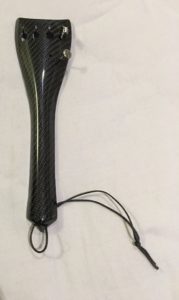 Nerd alert!
Nerd alert!
Big kudos to Kenneth Kuo for his incredible invention of carbon fibre tailpiece! Thanks to FB I learned about his invention from Robert DeMaine’s raving review and immediately order one to try out. Got the first version with two fine tuners. When I first put it on my 2003 William Whedbee cello, already noticed a big change in how the cello vibrated: immediate apparent amplified and longer lasting resonance. I was at first worried that it would have that emptiness in tone similar to a carbon fiber cello, turned out it was a completely different story. After it settled in for a couple days, the tone was warm, much more vibrant (as in 30% louder), high register brighter, low register deeper and way more resonant. The most noticeable thing for me was the obvious increase in sensitivity of the instrument, forcing me to be much more precise in vibrato, and in matching vibrato with the bow.
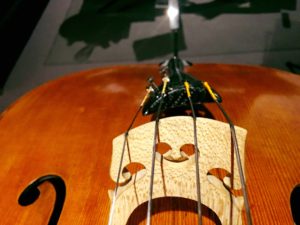
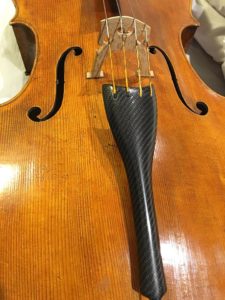 However I was not happy to see the rather unbalanced tension of the tailpiece. (picture 2) So I experimented with taking off all the fine tuners. All of the above enhancements were immediately increased by another 10-20%. But then my pegs weren’t nice so it was very hard to tune especially the A. So I had to compromise with one fine tuner. (picture 1)
However I was not happy to see the rather unbalanced tension of the tailpiece. (picture 2) So I experimented with taking off all the fine tuners. All of the above enhancements were immediately increased by another 10-20%. But then my pegs weren’t nice so it was very hard to tune especially the A. So I had to compromise with one fine tuner. (picture 1)
Of course Ken wouldn’t let me stop there, and was so kind to ship another new tailpiece with no fine tuner holes. I may go so far to say my cello is now 1.8-2 times as loud as it has ever been, with incredible vibrancy in tone. What I like most is the increase in sophistication of tone and sensitivity, calling for precise intonation, fine control of vibrato and careful manipulation of the bow. (Basically it amplifies all the “mistakes”, which is great! Because the result is so much better.) Short notes also speak a lot faster (and screams at you if your contact is not good). My recording producer thought it was a well-worth improvement and I am loving it.
Alvin Wong
Solo Cellist
Lecturer of Music (Cello) at the Melbourne Conservatorium of Music at the University of Melbourne
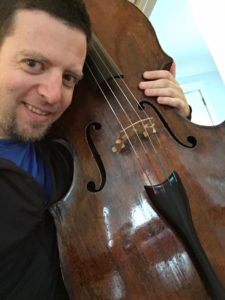 Wow!
Wow!
To say that I am thrilled with my new carbon fiber cello tailpiece is an understatement. I have had the tailpiece on for about 3 weeks and I am still a little giddy taking the cello out of its case. My old Italian cello, though it has been cut down on the top, is long from bridge to button and wide from corner to corner, so much so that it doesn’t fit in some cases, and (up until this time) has had a rather long ebony tailpiece. I never thought of the cello as muffled or lacking in projection, but compared to how it sounds now, that is exactly how it seems. The cello has retained its rich tone and balance and added a new dimension of resonance and response. The only way I can describe it is that the sound seems to leap out of the instrument! This new ringing quality of sound allows me to play very softly and feel that the sound is spinning and projecting, and also play big, with a robustness I am still surprised by. Thank you Kenneth Kuo for creating something visually beautiful and incredibly important. We are beaming!
Daniel Levitov
Coordinator of Cello and Chamber Music, Peabody Preparatory at Peabody Institute

Robert DeMaine with his Stradivarius
It is just hard to describe how much a seemingly unimportant string-holder (as the Germans called it for centuries), could impact the sound quality and playability of an instrument. My main beef with doubters and indeed closed-minded cynics is their unwillingness to try something that is a bit unusual. True, $ can be an issue, but perhaps some kinks can be worked out where there could be a “tester” sent out for a nominal fee, then returned to Mr. Kuo (the patent owner), who would be likely consider customizing one with a particular instrument in mind. I’m definitely in the “very emotionally enthusiastic camp” when it comes to innovations (just ask Brinton), but the things I have stuck with over the ages were once brand new IN MY LIFETIME, and this is one such creation that is of such importance that it merits attention and bears individual scrutiny. This is a wonderful thing. Mine is painted, has a special, engraved, brass shield (whittled from over 5 grams to less than 2 grams), attached with simple trophy-quality double-sided tape. I suppose it could be epoxied, but I may decide to remove the embellishment at some point. The Kevlar tailcord has proven itself to also be a terrific innovation, so let’s take a leap of faith on the carbon-fiber tailpiece, shall we? It’s fantastic. Whether on a Stradivari or a reworked Chinese factory instrument, I cannot imagine it would have a detrimental effect on the sound or ease of playability.
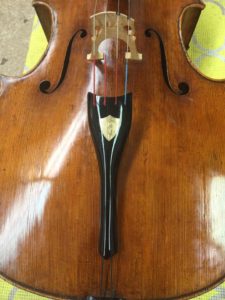
On the 1684 General Kyd Stradivarius
My experience has been, so far, that the instrument is much more even, has more growl in the bass (both C and even G), and is easier to play purely in tune and not over-vibrate. It’s easier on the left hand. It is easier to get to the bridge without harshness, and trickier bow strokes are somehow magically easier (except for staccato – which it seems you either have it or you don’t, but it’s no big whoop). Spiccato/sautillé is far more important, anyway. Détaché is a breeze, and the device encourages you to stay on the string, where you should BE ANYWAY 99% of the time!
Anyway, I’m not a “paid shill” for Kenneth Kuo, but I believe in his product and I like it so much that I want to shout it from the rooftops. I don’t imagine I’ll be going back to my Wittner again. One caveat: I don’t use the fine tuners anymore. I’m an old-school, former Wondertone Gold-Label (hand-me-downs from my sister and first teacher), and then Eudoxas, and I grew up playing raw gut A-strings, too. That was very good training, especially for the bow, as you have to “cut” the string a certain way to get it to sing and articulate correctly. So, I’m doing away with fine tuners altogether and having the strings attached to the new tailpiece by a simple, drilled, round hole that easily accommodates steel strings. So, there’s no “medium” between the string and the tailpiece, minimizing any physical interruption in the vibration in the afterlength from back of bridge to point of contact with the tailpiece. Just like gut. So, if one opts for that setup, you must have well-functioning pegs which need a specific chalk, peg dope, and even soap if there is difficulty in turning them. Again, if you’re less “old-school” than I, then you might opt for pegheds or those weird things that do the fine tuning up top, but what a gigantic pain in the ass to restring a cello, eh?! It worked for countless cellists for many years.
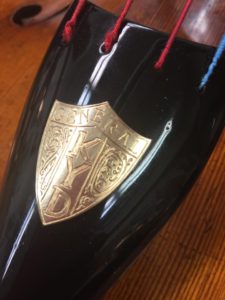 Last thing: I really like Rostanvo Strings a lot. My cello likes Spirocores and Versums, though, and I will always use them (full disclosure: I am a Thomastik-Infeld artist and intend to stay with them). I was in London giving a class at Guildhall a couple weeks ago when Stefan Popov (longtime professor there) came up to me and gave me a set of his strings and wanted to see what I thought. Well, I tried them, fell in love, and then fell out of love like I almost always do. Spirocores are my standbys. They are, in my opinion, the best string out there, and worth the money. I hope I’m not going to get in trouble with Thomastik by being honest, but I can’t “NOT” try other things from time to time.
Last thing: I really like Rostanvo Strings a lot. My cello likes Spirocores and Versums, though, and I will always use them (full disclosure: I am a Thomastik-Infeld artist and intend to stay with them). I was in London giving a class at Guildhall a couple weeks ago when Stefan Popov (longtime professor there) came up to me and gave me a set of his strings and wanted to see what I thought. Well, I tried them, fell in love, and then fell out of love like I almost always do. Spirocores are my standbys. They are, in my opinion, the best string out there, and worth the money. I hope I’m not going to get in trouble with Thomastik by being honest, but I can’t “NOT” try other things from time to time.
A word to the wise: do not change too many things in the paradigm — don’t change too many variables at once. You’ll be chasing your tail, wondering what caused the A to sound great but the C to start sounding like Chewbacca, the D to sound like Almighty God made it Himself but the G is from somewhere far south of there. You know what I mean. Go stepwise; don’t screw around and change everything at once because you’re excited. Like me.
Robert DeMaine
Principal/Solo Cello, Los Angeles Philharmonic
International soloist, chamber musician, teacher, and presenter
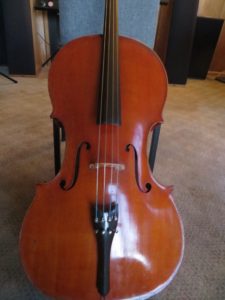
on Postiglione cello
Kenneth, Sometimes when something sounds too good to be true, it really can be true. Your cello tailpiece is amazing. Thank you so much.
Ronald Welch
Cellist
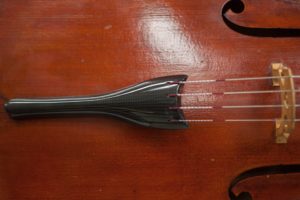 When I think about all the bows I’ve tried and how much of an investment I would have to make in order to sound A LITTLE cleaner and then think about how small of an investment, in comparison, I make in the Tonal Tailpiece to sound MUCH cleaner and with fuller color, it’s a no-brainer. Congratulations, Kenneth Kuo!
When I think about all the bows I’ve tried and how much of an investment I would have to make in order to sound A LITTLE cleaner and then think about how small of an investment, in comparison, I make in the Tonal Tailpiece to sound MUCH cleaner and with fuller color, it’s a no-brainer. Congratulations, Kenneth Kuo!
Yuriy Юрко Leonovich
Substitute Cello, Charleston Symphony Orchestra
Cello Professor, Bob Jones University
Cello, Greenville Symphony Orchestra
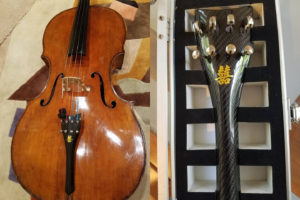
1715 Gaetano Pasta
Recently purchased and installed my 3rd carbon fiber tail piece by Kenneth Kuo. This one as a wedding gift for Kristopher Khang and Sami Myerson Khang. Note the custom detail Ken added at my request!!
Brinton Smith
Principal Cello, Houston Symphony, faculty Rice University, Aspen Music Festival
 I had the privilege of spending the day wth Kenneth Kuo at his workshop in Connecticut yesterday. He led me through the labor-intensive process of creating and assembling his innovative carbon fiber tailpieces. It was an unbelievable eye opener. The amount of detail and craft that goes in to each and every piece is hard to imagine until you see it. And the amount of variety of custom options that one might choose makes the imagination soar. Ken is an amazing inventor.
I had the privilege of spending the day wth Kenneth Kuo at his workshop in Connecticut yesterday. He led me through the labor-intensive process of creating and assembling his innovative carbon fiber tailpieces. It was an unbelievable eye opener. The amount of detail and craft that goes in to each and every piece is hard to imagine until you see it. And the amount of variety of custom options that one might choose makes the imagination soar. Ken is an amazing inventor.
But the most important part of this experience is the tonal change in the cellos I brought to him. Completely unexpected. Beautiful and open, quick response, rich and dark. An embarrassment of riches. I would completely recommend anyone who wants an improvement in their tone to get in touch with Ken.
Peter Seidenberg
Cellist


